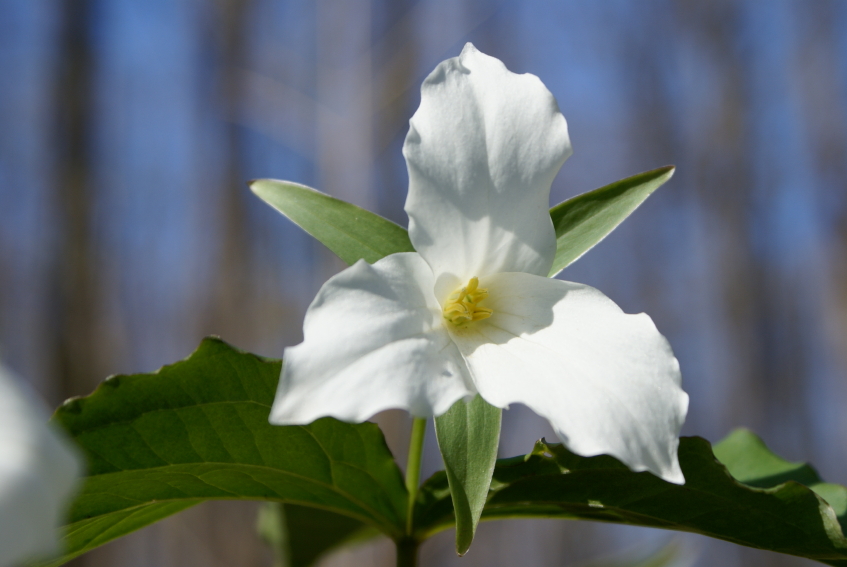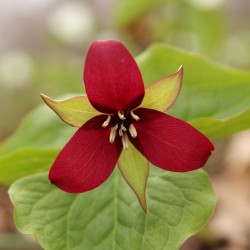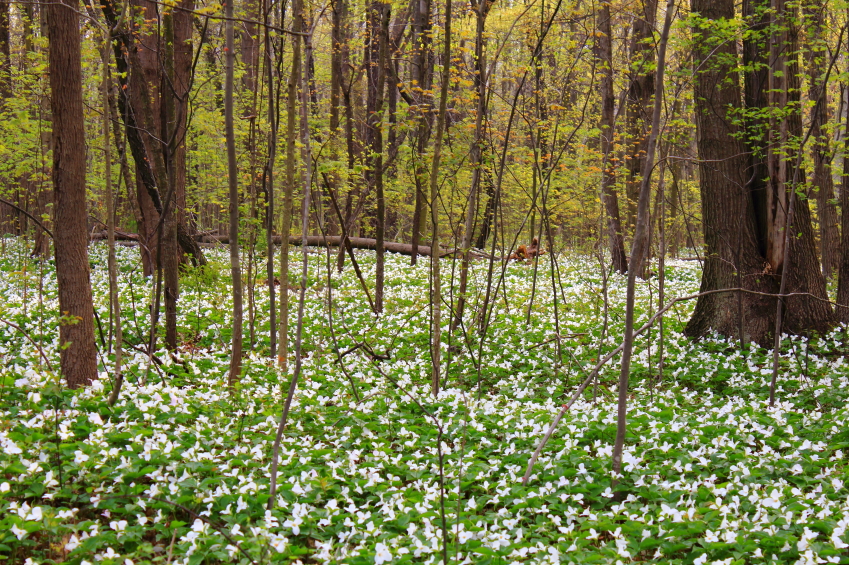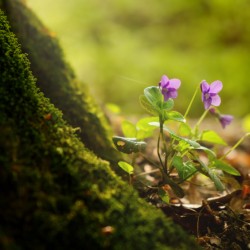
Spring’s Emblems: Trilliums in Ontario’s Cottage Country
During the brief time in spring between the snow melting and trees bursting with leaves, a spectacular event occurs in Ontario’s cottage country. The forest floor turns white again – though not with snow – and everywhere you turn in the woods around you, a carpet of dazzling trilliums is on display.
 Starting in late April and peaking around the third and fourth weeks of May, the reign of the familiar three-petal provincial flower of Ontario is an unbelievable experience to behold. Adding to the grandeur, mixed in with the common white trillium (Trillium grandiflorum), which is sometimes also pink, is the less common but even more striking red trillium (Trillium erectum), usually burgundy in colour.
Starting in late April and peaking around the third and fourth weeks of May, the reign of the familiar three-petal provincial flower of Ontario is an unbelievable experience to behold. Adding to the grandeur, mixed in with the common white trillium (Trillium grandiflorum), which is sometimes also pink, is the less common but even more striking red trillium (Trillium erectum), usually burgundy in colour.
Rarer still is the incredible painted trillium (Trillium undulatum), a white bloom with a deep purple centre and lines radiating outward, which help guide rare spring insects into its centre for pollination purposes. This flower grows in somewhat different conditions than its more common cousins, so if you are determined to search it out, look in evergreen woods with hemlock, spruce (especially black spruce), red cedars and pines, in bogs and in sandy soils (e.g. near beaches).
Another rare trillium is the nodding or drooping trillium (Trillium cernuum), a white trillium distinguished by its nodding or leaned over bloom with curled-back petals. It’s found in evergreen forests and wet areas.
While trilliums are the most numerous, they’re not the only early bright-blooming flowers that grace the wilds of Algonquin Park, the Almaguin Highlands, Loring-Restoule, Muskoka and Parry Sound in spring. Blue violets, yellow trout lilies, white Dutchman’s-breeches, pink spring beauties, purple fringed polygala and many more also adorn the hillsides with dashes of colour in mid to late May.
 Why do these flowers bloom gloriously in spring only to disappear completely in summer? The answer is simple: sunlight. They are opportunistic plants, seizing the energy from the sun’s rays before the leaves of the trees above block them. They have a short but gorgeous run (your average trillium blooming for 10-14 days), then they go dormant until next spring. So see them while you can!
Why do these flowers bloom gloriously in spring only to disappear completely in summer? The answer is simple: sunlight. They are opportunistic plants, seizing the energy from the sun’s rays before the leaves of the trees above block them. They have a short but gorgeous run (your average trillium blooming for 10-14 days), then they go dormant until next spring. So see them while you can!
If you’re not sure where to look for trilliums, there are plenty of trails in Algonquin Park, the Almaguin Highlands, Loring-Restoule, Muskoka and Parry Sound.
(And remember – it is illegal to pick trilliums in provincial parks or conservation areas.)
To plan your visit to Ontario’s cottage country, click here. For more spring experiences, click here.

Guest Blogger: Karen Wehrstein
A resident of Muskoka, Ontario, Karen Wehrstein is a freelance writer and published novelist whose work has appeared in the National Post, Montreal Gazette, as well as Muskoka Magazine, What’s Up Muskoka and other regional publications. She lives on thirty acres of beautiful forest near Lake of Bays.
![]()
